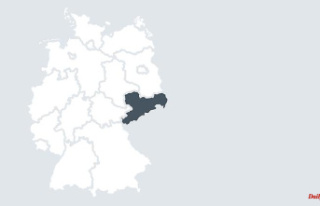Jena (dpa/th) - According to Jena scientists, microorganisms in the deeper layers of the earth can produce a similar amount of biomass as those in some areas of the sea, despite absolute darkness. To do this, they examined an aquifer - i.e. a body of rock with cavities for groundwater - at a depth of 5 to 90 meters using a highly sensitive measurement method with radioactive carbon, as the University of Jena announced on Thursday.
The scientists were able to prove that these communities are not dependent on solar energy in absolute darkness, it was said. Instead, they could obtain their energy independently from the oxidation of rock or from substances that are transported downwards.
In fact, the oceans and above-ground habitats are considered to be the ecosystems with by far the highest primary production on earth. Plants and other organisms sequester carbon from the atmosphere and use solar energy to produce biological material through photosynthesis. The theory is that there is hardly any primary production where there is no sun.
Nevertheless, based on the measurements, the researchers estimate the net productivity of living beings in around two-thirds of the global groundwater reservoirs to be 0.25 percent of the biomass produced worldwide. "Since there is very little energy available in these nutrient-poor and perpetually dark habitats, even a small proportion of the world's primary production is a surprise," said co-author Kirsten Küsel.
According to first author Will Overholt, the measured values can be compared with those in nutrient-poor sea surface waters. They are also six times higher than in deeper ocean zones, where there is just enough light for photosynthesis. The work of the researchers from the Friedrich Schiller University Jena and the German Center for Integrative Biodiversity Research (iDiv) was published in the journal "Nature Geoscience".












